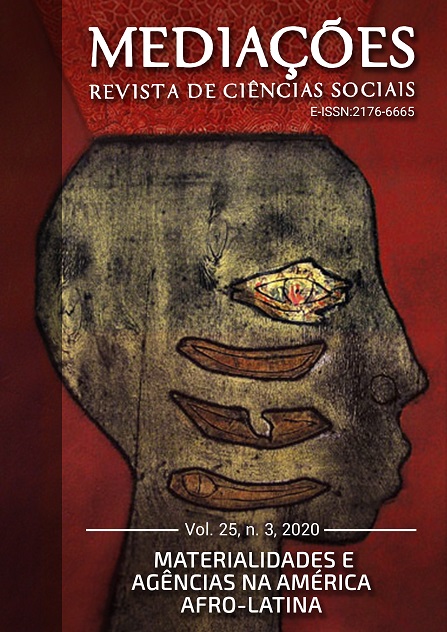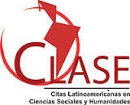In Hyppolite's traces: haitian folk painting between religion and art
DOI:
https://doi.org/10.5433/2176-6665.2020v25n3p602Keywords:
Haiti, Voodoo, Popular painting, Art, ReligionAbstract
This article, based on an ethnography with historical documents, seeks to reflect on the construction practices of the so-called "popular art" in Haiti in the mid20th century. To this end, it follows the creation and the first years of operation of the Center d'Art, a center for the production and dissemination of Haitian plastic arts created in 1944, and the circulation of its first exhibitions abroad. Particular emphasis is given to the narrative articulated by the institution around the celebrated painter and voodoo priest Hector Hyppolite (1894-1948), who, i argue, is himself regarded as a kind of circulating artifact. The work and the very figure of Hyppolite function as well as the condensed image of a "popular Haiti" that was wanted to be projected at that moment, marked by its African roots expressed both in the religious and artistic fields.Downloads
References
BRETON, André. Hector Hyppolite. In: BRETON, A. Le surréalisme et la peinture. Paris: Gallimard, 1965. p. 394-399.
BRUMANA, Fernando. El Métraux haitiano: la construcción de una etnología religiosa. Journal de la Société des Américanistes, Paris, v.102, n. 2, p. 145-167, 2016.
CASTAÑEDA, Luís M. Island Culture Wars: Selden Rodman and Haiti. Art Journal, New York, v. 73, n. 3, p. 56-69, 2014.
CÉLIUS, Carlo Avierl. Langage plastique et énonciation identitaire. L'invention de l'art haïtien. Québec: Les presses de L'Université Laval, 2007.
CÉLIUS, Carlo Avierl. Quelques aspects de la nouvelle scène artistique d'Haïti. Gradhiva, Paris, n. 21, p. 104-129, 2015.
CHENET, Jean; THOBY-MARCELIN, Phillipe. La double vie d'Hector Hyppolite (extraits). Conjonction, Port-au-Prince, n. 16, 1948.
DUBOIS, Laurent. Haiti: the aftershocks of history. New York: Metropolitan Books, 2012.
DURANTON-CRABOL, Anne-Marie. Les intellectuels français en exil aux Etats-Unis pendant la Seconde Guerre mondiale: aller et retour. Matériaux Pour L'histoire de Notre Temps, Paris, n. 60, p. 41-47, 2000.
GEIS, Terri. Myth, History and repetition: André Breton and Vodou in Haiti. South Central Review, Baltimore, v. 32, n. 1, 2015, pp. 56-75.
GELL, Alfred. A rede de Vogel: armadilhas como obras de arte e obras de arte como armadilhas. Arte e Ensaios, Rio de Janeiro, ano 8, n. 8, p. 174-191, 2001.
GELL, Alfred. Arte e agência. São Paulo: Ubu Editora, 2018.
GOYATÁ, Júlia Vilaça. Haiti popular: saberes antropológicos e artísticos em circulação. 2019. Tese (Doutorado em Antropologia Social) - Universidade de São Paulo, São Paulo, 2019.
HAFFNER, Peter. Tourism and Connoisseurship in the Collection Histories of Haitian Art in the United States. Latin American History, Oxford, 2017.
HERSKOVITS, Melville. Life in a Haitian Valley. New York: Anchor Books, 1971.
HERZFELD, Michael. Intimidade cultural: poética social no Estado-Nação. Coimbra: Edições 70, 2005.
LAURIÈRE, Christine. D'une île à l'autre: Alfred Métraux en Haiti. Gradhiva, Paris, n. 1, p. 181-207, 2005.
LEIRIS, Michel. Antilles et poésie des carrefours. In: LEIRIS, M. Zébrages. Paris: Gallimard, 1992.
LEIRIS, Michel. Contacts de civilisations en Martinique et en Guadeloupe. Paris: Gallimard: UNESCO, 1955.
LUNHING, Angela. Verger-Bastide: dimensões de uma Amizade. Rio de Janeiro: Bertrand Brasil, 2002.
MABILLE, Jean-Pierre. L'entracte haïtien. Conjonction, Paris, n. 212, p. 39-42, 2005.
MAGLOIRE, Gérarde; YELVINGTON, Kevin. Haiti and the anthropological imagination. Gradhiva, Paris, n. 1, p. 127-152, 2005.
MÉTRAUX, Alfred. Itinéraires I. Carnets de notes et journaux de Voyage. Paris: Payot, 1978.
MÉTRAUX, Alfred. Le vaudou haitien. Paris: Gallimard, 1958.
MÉTRAUX, Alfred; VERGER, Pierre. Le pied à l'étrier. Correspondance (1946-1963). Paris: Jean Michel Place, 1994.
NADEAU, Maurice. História do surrealismo. São Paulo: Perspectiva, 1985.
NICHOLLS, David. IdeÌologie et mouvements politiques en Haïti, 1915-1946. Annales, París, n. 4, p. 654-679, 1975.
PEIXOTO, Fernanda Arêas. Bastide e Verger entre 'áfricas' e 'brasis': rotas entrelaçadas, imagens superpostas. Revista do IEB, São Paulo, n. 50, p. 13-66, set./mar. 2010.
POLYNÉ, Millery. To make visible the invisible epistemological order: Haiti, singularity, and newness. In: POLYNÉ, M. (ed.). The Idea of Haiti: rethinking crises and development. Minneapolis: University of Minnesota Press, 2013.
PRICE, Sally. Michel Leiris, French anthropology and a side trip to the Antilles. In: COLLOQUIUM "AU CÅ’UR DU XXE SIEÌ€CLE: LA CULTURE ANTILLAISE AU MIROIR DE MICHEL LEIRIS", 2002. Actes [...] Martinique: Archives DeÌpartementales, Fort-de-France, 2002.
REVISTA CONJONCTION, [S. l.], n. 1, jan. 1946.
RICHARDSON, Michael; FIJALKOWSKI, Krzysztof. Refusal of the Shadow: Surrealism and the Carribean. New York: Verso Books, 1996.
RIGAUD, Milo. La tradition voudoo et le voudoo haïtien (son temple, ses mystère, sa magie). Port-au-Prince: Éditions Fardin, 2015.
RODMAN, Selden. Renaissance in Haiti: popular painters in the Black Republic. New York: Pellegrini & Cudahy, 1948.
TOLEDO, Magdalena. Marronismos, bricolagens e canibalismos: percursos de artistas e apropriações de Aimé Césaire na Martinica contemporânea. 2014. Tese (Doutorado em Antropologia Social) - Universidade Federal do Rio de Janeiro, Rio de Janeiro, 2014.
TROUILLOT, Michel-Rolph. The odd and the ordinary: Haiti, the Caribbean, and the world. Cimarrón, [S. l.], v. 2, n. 3, p. 3-12, 1990.
ULYSSE, Sterlin. Le vaudou dans l'art contemporain. In: CUZIN, Régine at alii. Haiti: deux siècles de création artistique. Paris: Réunion des Musées Nationaux - Grand Palais, 2015.
Downloads
Published
How to Cite
Issue
Section
License
Copyright (c) 2020 Júlia Vilaça Goyatá

This work is licensed under a Creative Commons Attribution 4.0 International License.
Copyright on articles published in Mediações belongs to the author(s): in the case of partial or entire republication of the original publication, we ask author(s) to indicate the original publication in the periodical.
Mediações uses the Creative Commons Attribution 4.0 International license, which allows Open Access, enabling any user to read, download, copy and disseminate its content so long as adequately referenced.
The opinions expressed by the author(s) are their sole responsibility.
Funding data
-
Fundação de Amparo à Pesquisa do Estado de São Paulo
Grant numbers 2014/25349-9
































